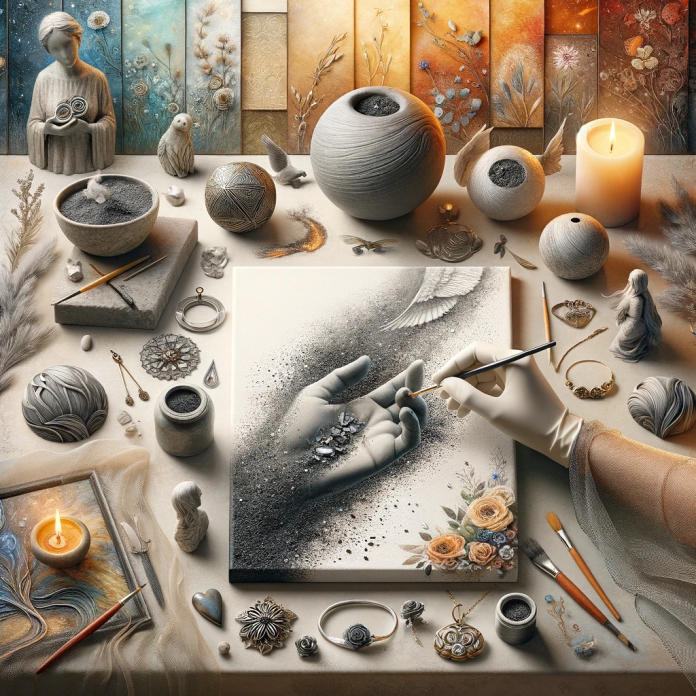Memorial art is a unique and personal way to remember and honor loved ones who have passed away. One increasingly popular method is to incorporate the ashes of the deceased into the artwork, creating a tangible and lasting tribute. This article explores the various creative ways to use ashes in memorial art, providing inspiration for those seeking a meaningful way to commemorate their loved ones.
Understanding Ashes in Art
The process of incorporating ashes into art is a delicate one, requiring both technical skill and a deep respect for the material. The ashes are typically mixed with a binding agent before being used in the artwork, ensuring they remain securely in place. This process allows for a wide range of artistic expressions, from paintings and sculptures to jewelry and glasswork.
It's important to note that not all ashes are suitable for this type of artwork. The ashes must be properly processed and free of any large fragments. It's recommended to work with a professional artist or company that specializes in this type of memorial art to ensure the best results.
Paintings and Drawings
Canvas Art
One of the most common ways to use ashes in memorial art is through paintings. The ashes are mixed with paint and applied to the canvas, creating a textured and unique piece of art. This method allows for a great deal of personalization, as the painting can be of any subject matter that holds significance to the deceased or their loved ones.
Some artists even offer the option to incorporate the ashes into a portrait of the deceased, creating a deeply personal and meaningful tribute. The finished artwork can be displayed in the home, providing a comforting presence and a beautiful reminder of the loved one.
Charcoal Drawings
Another option is to use the ashes to create a charcoal drawing. This method involves grinding the ashes into a fine powder and mixing them with a binder to create a charcoal-like substance. The artist then uses this material to create a detailed and poignant drawing.
Charcoal drawings made with ashes have a unique texture and depth, making them a striking and meaningful piece of memorial art. Like paintings, these drawings can be of any subject matter and can be customized to reflect the personality and interests of the deceased.
Sculptures
Sculptures are another popular choice for memorial art using ashes. The ashes are mixed with a clay or resin material and then molded into a desired shape. This could be a simple and abstract form, or it could be a more detailed and realistic representation, such as a bust of the deceased.
These sculptures serve as a tangible and lasting tribute, providing a physical reminder of the loved one. They can be displayed in a variety of settings, from a mantelpiece at home to a dedicated memorial garden.
Jewelry
Jewelry is a more intimate and personal form of memorial art. The ashes can be incorporated into a variety of jewelry pieces, including pendants, rings, and bracelets. This allows the wearer to keep their loved one close at all times.
There are many different methods for incorporating ashes into jewelry. Some artists encapsulate the ashes in a glass or resin pendant, while others mix the ashes with a metal alloy to create a unique and beautiful piece of jewelry.
Glasswork
Glasswork is a particularly striking way to use ashes in memorial art. The ashes are mixed with molten glass and then blown or molded into a desired shape. The result is a beautiful and unique piece of art that captures the light and serves as a constant reminder of the loved one.
There are many different forms of glasswork that can incorporate ashes, including vases, paperweights, and ornaments. Each piece is unique and can be customized to reflect the personality and interests of the deceased.
Conclusion
Incorporating ashes into memorial art is a beautiful and meaningful way to remember and honor loved ones who have passed away. Whether it's a painting, a sculpture, a piece of jewelry, or a glasswork, these pieces serve as a tangible and lasting tribute. They provide comfort and solace, reminding us of the love and memories we shared with the deceased.
As with any form of memorial, it's important to choose a method that feels right for you and your loved one. Consider their personality and interests, as well as your own comfort and preferences. And remember, the most important thing is that the artwork serves as a meaningful and personal tribute to your loved one.


-banner.png)





